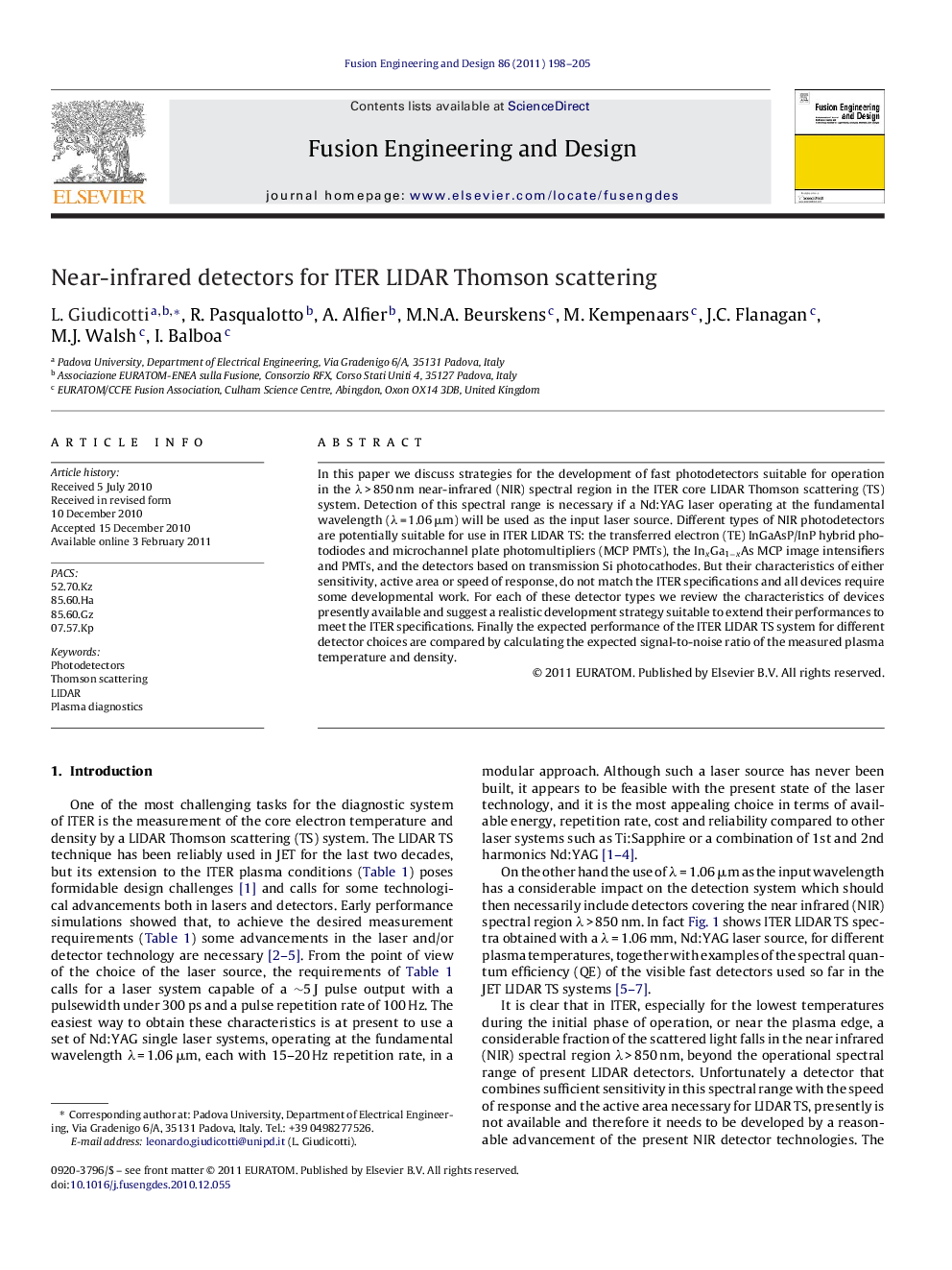| Article ID | Journal | Published Year | Pages | File Type |
|---|---|---|---|---|
| 272580 | Fusion Engineering and Design | 2011 | 8 Pages |
In this paper we discuss strategies for the development of fast photodetectors suitable for operation in the λ > 850 nm near-infrared (NIR) spectral region in the ITER core LIDAR Thomson scattering (TS) system. Detection of this spectral range is necessary if a Nd:YAG laser operating at the fundamental wavelength (λ = 1.06 μm) will be used as the input laser source. Different types of NIR photodetectors are potentially suitable for use in ITER LIDAR TS: the transferred electron (TE) InGaAsP/InP hybrid photodiodes and microchannel plate photomultipliers (MCP PMTs), the InxGa1−xAs MCP image intensifiers and PMTs, and the detectors based on transmission Si photocathodes. But their characteristics of either sensitivity, active area or speed of response, do not match the ITER specifications and all devices require some developmental work. For each of these detector types we review the characteristics of devices presently available and suggest a realistic development strategy suitable to extend their performances to meet the ITER specifications. Finally the expected performance of the ITER LIDAR TS system for different detector choices are compared by calculating the expected signal-to-noise ratio of the measured plasma temperature and density.
